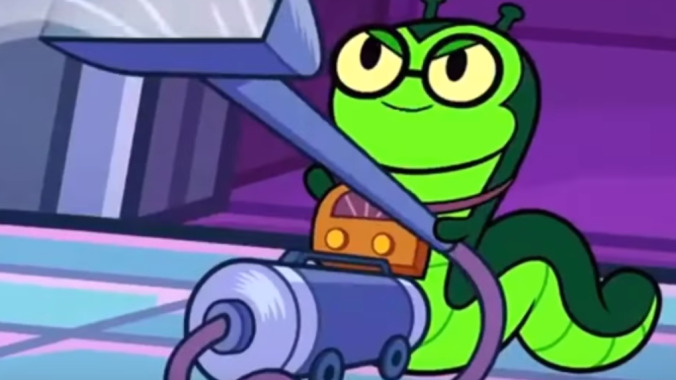Wiki Wormhole: Now with more worms!

We explore some of Wikipedia’s oddities in our 5,917,073-week series, Wiki Wormhole.
This week’s entry: List Of Fictional Worms
What it’s about: We were going to start with the Latin classification for worms, but there isn’t one. The word “worm” can apply to any cylindrical animal with no limbs that lives underwater or underground. Those are usually invertebrates, but the term covers some amphibians and a legless lizard called the slowworm. These unglamorous creatures have captured the imagination of storytellers from Richard Scarry to Frank Herbert to the anonymous medieval poet who wrote Beowulf.
Biggest controversy: There are worms and there are wyrms. In the aforementioned epic poem (1,000-year-old spoiler alert), Beowulf dies defeating a creature that’s alternately called a dragon and a “wyrm.” The word comes from Old English, and originally referred to a “legless serpent or dragon,” but it was modernized to “worm,” and applied to more mundane legless creatures.
Strangest fact: There’s a fair amount of worm-related mythology. Most of it is from the British Isles, as there’s a 12th-century legend of the Worm Of Linton, an invulnerable beast that ate crops, livestock, and people throughout the Scottish countryside. It was described as “in length three Scots yards and bigger than an ordinary man’s leg.” Two hundred years later, the Sockburn Worm terrified Northumbria (a region that overlaps England and Scotland), and may have been the inspiration for the Jabberwocky. The Lambton Worm is the legend of one John Lambton, who fought a giant wyrm that was terrorizing the locals in northeast England. (Bram Stoker’s 1911 novel The Lair Of The White Worm was based on the Lambton legend.)
A more modern (and non-British worm) legend is that of the Mongolian Death Worm, a crypto-zoological creature described in the 1926 book On The Trail Of Ancient Man. The author, American paleontologist Roy Chapman Andrews, said of the Mongolians who told him about the worm, “None of those present ever had seen the creature, but they all firmly believed in its existence and described it minutely.” And no doubt had a good laugh afterward.
Thing we were happiest to learn: Frank Herbert was onto something with those sandworms. The gigantic, desert-dwelling creatures play a pivotal role in his Dune series of books (and the subsequent 1984 film, two Syfy TV adaptations, and forthcoming 2020 film), but variations also appear in Beetlejuice, Final Fantasy, Diablo, and 2007 anime film Vexille. Vexille’s sandworms are mechanical, and while the film’s page doesn’t mention them, Fictional Words describes them as, “giant whirling tunneling tornadoes of metallic scrap.”
Thing we were unhappiest to learn: The DCEU hasn’t given us enough of the evil alien worm it so clearly needs more of. Mr. Mind, a telepathic intelligent alien worm, only got a cameo in the recent Shazam! movie, but in the comics, the 2-inch-high supervillain manages to be a match for the much taller Captain Marvel (not to be confused with the Marvel Comics hero of the same name). Mr. Mind is notable for forming the first supervillain team made up of pre-existing characters banding together, the Monster Society Of Evil, largely made up of anthropomorphic moustache-twirlers.
Best link to elsewhere on Wikipedia: Gary Larson’s only significant non-Far Side project was about a worm. Four years after his iconic comic strip ended its 15-year run, Larson published a picture book, There’s A Hair In My Dirt!: A Worm’s Story, about a young worm who has an existential crisis, and is assured of his place in the ecosystem.
Further Down the Wormhole: Fictional worms made a passing appearance on an animated series more concerned with a fictional moose and squirrel. The Adventures Of Rocky And Bullwinkle is a title posthumously added to a show that never had that name. The 163 episodes of Jay Ward’s delightful satire ran across five years, two networks, and a number of titles, including Rocky And His Friends, The Bullwinkle Show, and The Rocky And Bullwinkle Show. One bit of sadly still-relevant satire was the recurring character of Senator Fussmussen, who was so xenophobic he hated Hawaii and Alaska. The latter is the largest and third-least-populous state, and is quite a roundabout way to get to Wikipedia’s category of things about America, including Sports In The United States. With another football season starting, and Carli Lloyd attempting to become the first female NFL player, next week seemed like a good time to visit the List Of Female America Football Players who came before her.